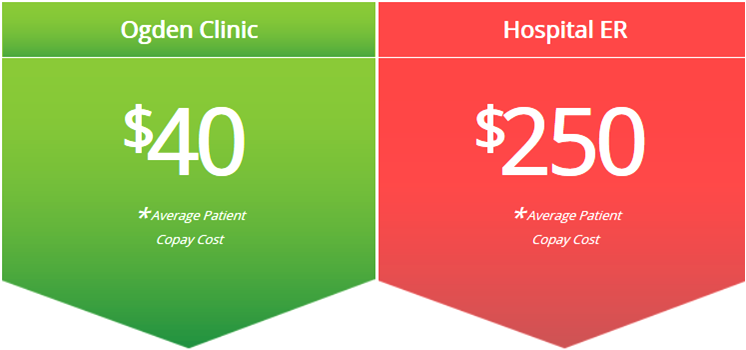Should I Go to Urgent Care or the ER?
- Category: Preventative Healthcare
- Posted On:

All too often, emergencies come out of left field. Your child may lose their footing and sprain an ankle, you can spike a fever on the weekend—these and hundreds of other scenarios catch us off-guard and need immediate attention. But how do you know if you should visit the emergency room (ER) or an urgent care facility? While the answer is not always cut-and-dry, we’ve cleared up a few key differences.
When is it urgent and when is it an emergency?
First and foremost, the ER is meant for true emergencies, that’s why it’s typically staffed 24/7. Experts in the emergency room can handle trauma, surgical procedures, and other life-threatening situations.
Head to the ER if you experience:
- Allergic reactions to bites, stings, or food
- Chest pain
- Compound fracture (or a break that needs immediate surgery)
- Deep wounds
- Difficulty breathing
- Head injuries
- Pain, bleeding, or abnormalities during pregnancy
- Persistent vomiting
- Severe bleeding
- Severe burns
- Seizure
- Traumatic injuries
- Unconsciousness
Many emergencies that are not life-threatening can be addressed at an urgent care clinic. Ogden Clinic urgent care facilities have in-house X-rays, lab testing, and equipment required to treat medical conditions like a burning fever or even a broken bone. Urgent care is not typically open 24 hours a day but many offer extended evening and weekend hours.
Consider Urgent Care if you experience:
- Cold and flu
- Cough and/or sore throat
- Cuts, scrapes, and other wounds
- Diarrhea or stomach pain
- High fever
- Infections (ear infections, pink eye, UTIs, etc)
- Minor injuries and burns
- Sprains and bone fractures
- Sports injuries
- Vomiting
Consider the Cost of Urgent Care and an ER Visit
If you or a loved one has a condition that’s non-critical, urgent care is much more cost-efficient than visiting the ER. Urgent care is primarily staffed with family medicine physicians and advanced practice providers. There is never a surcharge for visiting urgent care; patients pay only their office visit copayment at the time of service.
The average urgent care visit costs between $40 – $150 depending on the patient’s co-pay and level of treatment (according to Dr. Franz Rutucci, President of the American Academy of Urgent Care Medicine). If you’re insured, average co-pay in Utah is only $40 compared to $250 for an ER visit at the hospital.

Consider Location and Insurance Coverage
When it’s urgent, location really matters. Ogden Clinic has nine urgent care clinics — the most locations in Weber and Davis Counties. Every one of our providers accept nearly all insurance plans including Aetna®, Blue Cross/Blue Shield®, Cigna®, Medicare®, Select Health®, and United®.

Consider Wait Times at Urgent Care and the ER
Waiting can be a literal pain. Both the ER and urgent care facilities provide walk-in appointments and both can experience heavy patient volumes—especially during evening hours and on the weekends.
Wait time in urgent care is generally based on a first-come-first-serve basis. The emergency room is a little different: patients may wait longer inside of their room if another traumatic case enters the ER while they’re there. Because urgent care clinics don’t address life-threatening emergencies, patients rarely experience this type of issue. Patients who do come to urgent care with a severe issue will be directed to the ER immediately.
***
Understanding where to go for emergency care is important. It’s also important to consider other factors like the cost of treatment and insurance coverage. Whether you choose to visit the ER or an urgent care clinic, your medical emergency may require some follow-up care. Take into account where you’ll receive follow-up treatment after your initial visit.